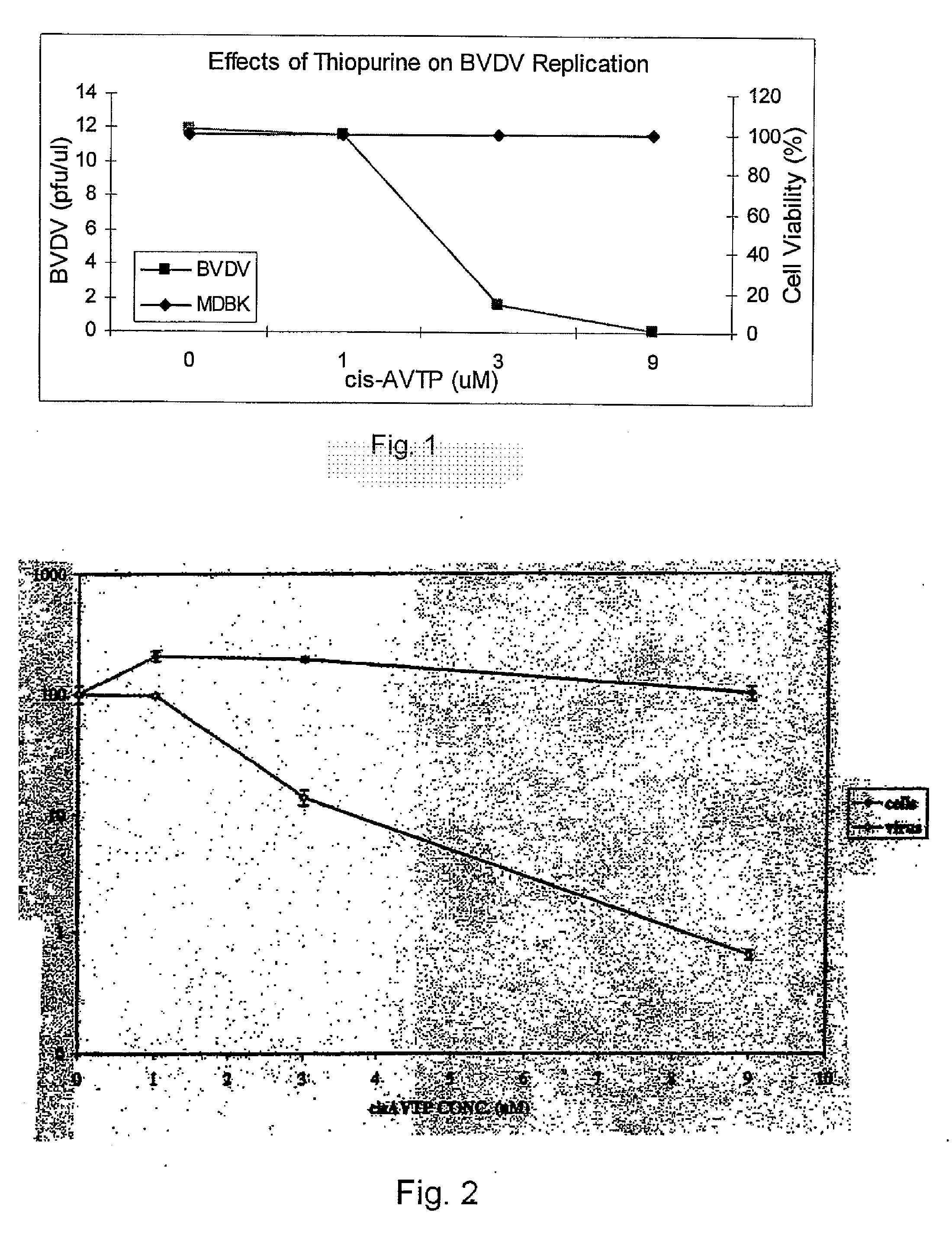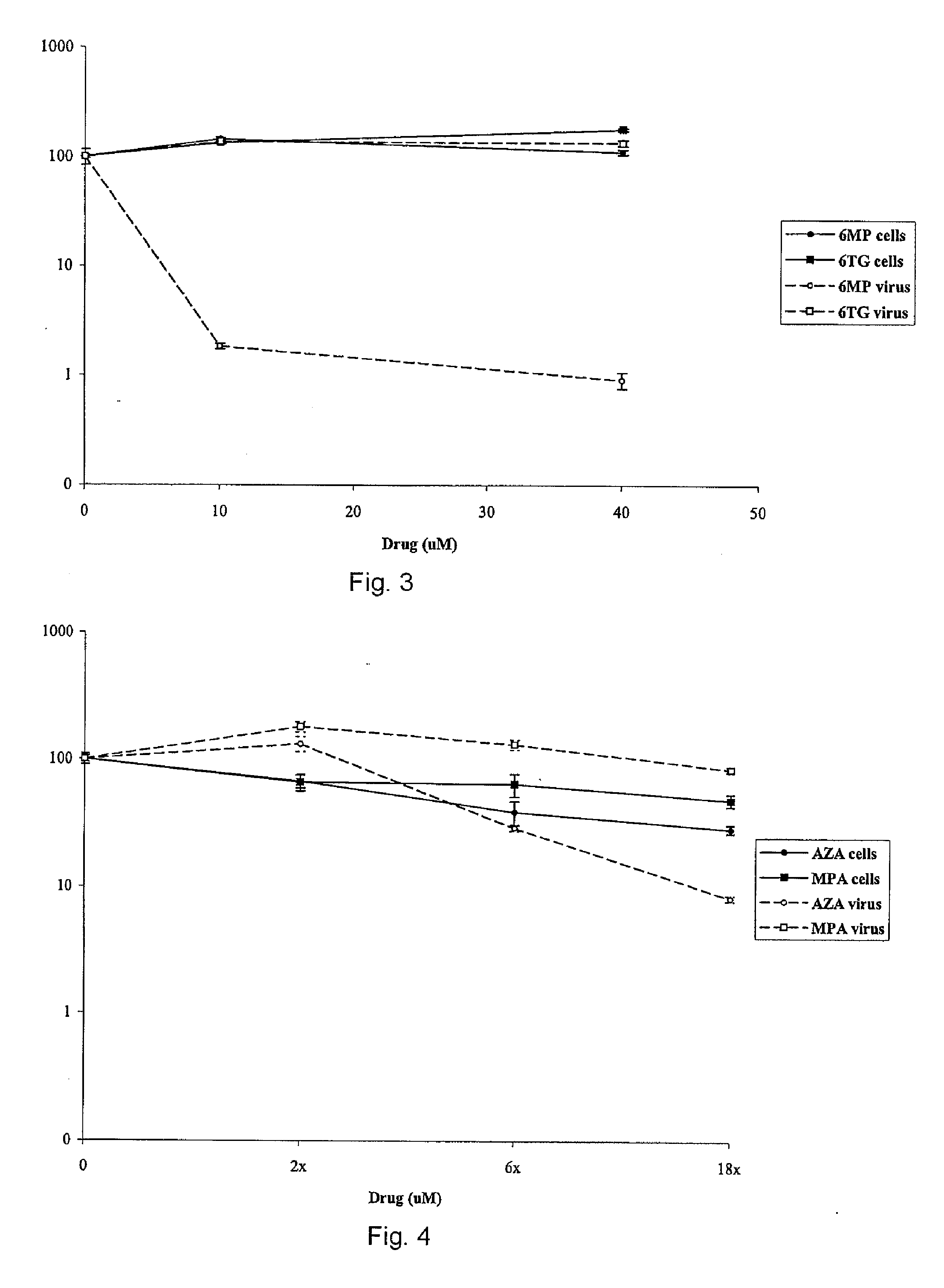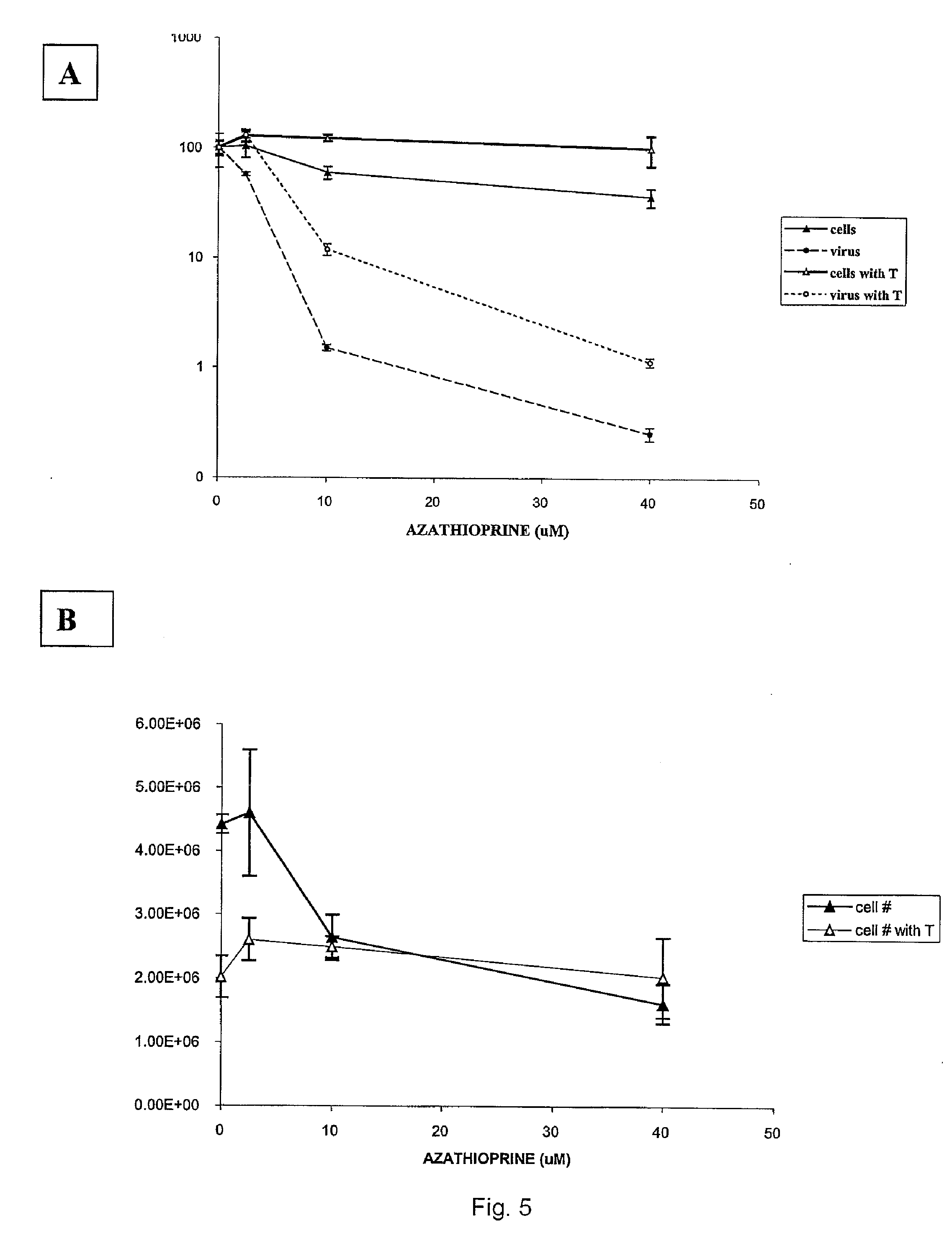Antiviral agents and methods of use
a technology of antiviral agents and methods, applied in the field of methods of inhibiting rna viruses, can solve the problems of inability to fully understand the mechanism of rna virus replication, few compounds effective against, and inability to effectively inhibit rna virus replication, so as to reduce systemic toxicity, reduce toxicity, and increase viricidal doses
- Summary
- Abstract
- Description
- Claims
- Application Information
AI Technical Summary
Benefits of technology
Problems solved by technology
Method used
Image
Examples
example i
[0034] Cis-AVTP as an Antiviral Agent
[0035] Generally the compound cis-6-(2-acetylvinylthio) purine (cis-AVTP), which was assayed by the inventors for its ability to inhibit RNA viruses using a bovine diarrhea virus (BVDV) model system that can be grown and manipulated in cell culture. Using this model system, the present inventors identified and measured the anti-viral effects of cis-AVTP and compared those to previously known anti-viral agents. The present invention is therefore based upon the inventors' discovery of anti-viral activity of cis-AVTP and the advantages it possesses over previous agents in terms of reduced side effects.
[0036] In general, the inventors have demonstrated that the thiopurines are more active against flaviviruses than ribavirin. Accordingly, the inventors demonstrated the in vitro replication of an HCV subgenomic replicon, transfected into the human hepatocyte cell line Huh-7 was more sensitive to the antiviral affects of the thiopurine azathioprine (A...
example ii
[0068] Effect of Antimetabolite Immunosuppressants on Flaviviridae Including Hepatitis C Virus
[0069] Background: Reoccurrence of Hepatitis C Virus (HCV) after liver transplantation is almost universal, and decreases both graft and patient survival. Medications that alter nucleic acid metabolism, including some common immunosuppressants used in HCV infected patients, may affect viral replication.
[0070] Methods: Bovine Viral Diarrhea Virus (BVDV) is in the Flaviviridae family and closely related to HCV. The inventors measured the effect of two immunosuppressants, azathioprine (AZA) and mycophenolate (MPA) on both BVDV replication by plaque assay, and host cell replication by flow cytometry. The inventors also compared the effect of ribavirin and AZA on the level of HCV replicon RNA by real time RT-PCR.
[0071] Results: At doses that achieved similar cytoxicity, AZA decreased BVDV replication 10 fold more than MPA. The inhibition of BVDV by AZA occurred at lower doses than the cellula...
example iv
[0084] Purine Nucleoside Analogs as Broad Spectrum Antivirals for Emerging RNA Viral Pathogens
[0085] Present embodiment investigates and teaches the use of the thiopurine class of nucleoside analogs as a broad spectrum antiviral for use in positive RNA viral infections.
[0086] Thiopurine nucleoside analog compounds have broad spectrum anti-RNA virus activities, and will be effective at inhibiting the replication of multiple related and unrelated viruses. Generally, inventors teach effectiveness of antiviral compounds in tissue culture system and effectiveness of antiviral compounds in cell free polymerase assay. The effectiveness study for the tissue culture system may be done by determining if a compound inhibits viral replication, is selective for viral resistance or if a drug induced mutations are linked to resistance. The effectiveness study for polymerase assay may be done by determining if a viral polymerase incorporates analog compounds during RNA transcription and if that a...
PUM
| Property | Measurement | Unit |
|---|---|---|
| Real time RT- | aaaaa | aaaaa |
| critical threshold | aaaaa | aaaaa |
| resistance | aaaaa | aaaaa |
Abstract
Description
Claims
Application Information
 Login to View More
Login to View More - R&D
- Intellectual Property
- Life Sciences
- Materials
- Tech Scout
- Unparalleled Data Quality
- Higher Quality Content
- 60% Fewer Hallucinations
Browse by: Latest US Patents, China's latest patents, Technical Efficacy Thesaurus, Application Domain, Technology Topic, Popular Technical Reports.
© 2025 PatSnap. All rights reserved.Legal|Privacy policy|Modern Slavery Act Transparency Statement|Sitemap|About US| Contact US: help@patsnap.com



